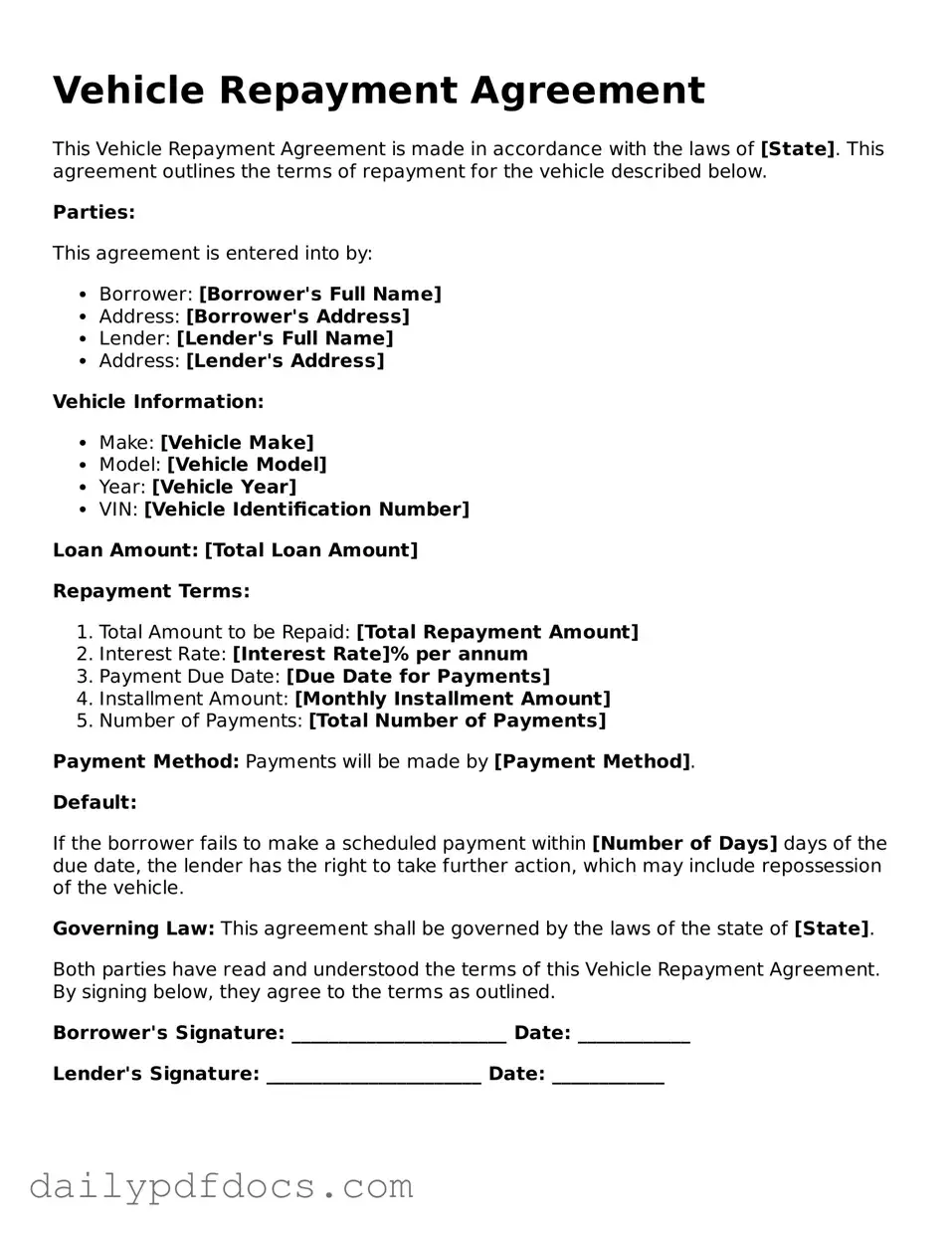What is a Vehicle Repayment Agreement form?
The Vehicle Repayment Agreement form is a document that outlines the terms and conditions under which an individual agrees to repay a loan or debt related to a vehicle. This agreement typically includes details such as the total amount owed, payment schedule, interest rates, and any penalties for late payments. It serves to protect both the lender and the borrower by clearly defining their responsibilities and expectations.
Who needs to fill out the Vehicle Repayment Agreement form?
This form is generally required for individuals who have taken out a loan to purchase a vehicle or who have entered into a financing agreement. It is essential for both the borrower and the lender to have a clear understanding of the repayment terms. Additionally, anyone refinancing an existing vehicle loan may also need to complete this form to formalize the new repayment terms.
What information is typically included in the form?
A standard Vehicle Repayment Agreement form will usually include the borrower's name, contact information, and details about the vehicle, such as its make, model, and VIN (Vehicle Identification Number). It will also outline the loan amount, interest rate, payment schedule, and any fees or penalties for missed payments. Both parties may need to sign the document to indicate their agreement to the terms.
How does the repayment process work?
Once the Vehicle Repayment Agreement is signed, the borrower is expected to make regular payments according to the agreed-upon schedule. Payments may be made monthly, bi-weekly, or at another frequency specified in the agreement. If a payment is missed, the borrower may incur late fees or other penalties as outlined in the agreement. It is crucial for borrowers to communicate with their lender if they encounter difficulties in making payments.
What happens if I cannot make a payment?
If a borrower is unable to make a scheduled payment, it is important to reach out to the lender as soon as possible. Many lenders are willing to discuss options, such as a payment extension or a revised payment plan. Ignoring the situation can lead to additional fees, negative impacts on credit scores, or even repossession of the vehicle in severe cases. Open communication can often lead to a more manageable solution.
Can the terms of the Vehicle Repayment Agreement be changed?
Yes, the terms of the Vehicle Repayment Agreement can be modified, but both parties must agree to any changes. This typically involves creating an amendment to the original agreement that details the new terms. It is essential to document any changes in writing and have both parties sign the amended agreement to ensure clarity and enforceability.
